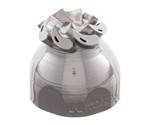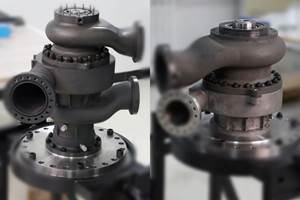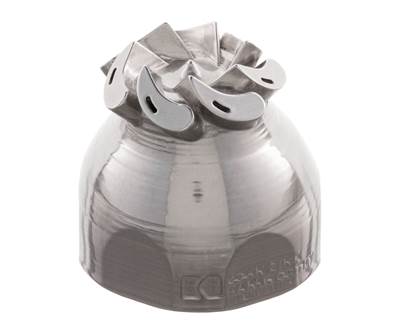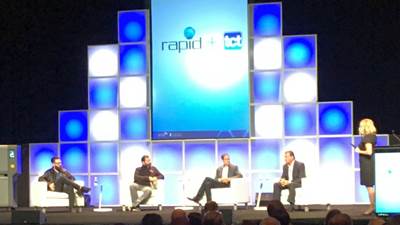Solving MRO Challenges with Bound Metal Deposition
Three case studies reveal how Desktop Metal’s second-generation Studio System bound metal deposition printer eliminates common safety hazards of metal AM, enhancing the technique’s value for maintenance, repair and operations (MRO) applications.

Desktop Metal’s Studio System 2 eliminates loose powder and does not rely on powerful lasers and special equipment. This enables users to keep the metal AM system on a nearby desk. All images are screenshots of a Desktop Metal webinar that took place March 25, 2021. Register to watch the full webinar at https://gbm.media/mrometalam.
Desktop Metal’s Studio System bound metal deposition (BMD) printer has shown great success in achieving cost and efficiency savings for manufacturers looking to produce maintenance, repair and operations (MRO) parts in-house, while also removing many of the obstacles traditionally holding back metal additive manufacturing (AM). BMD is an adaptation of metal injection molding (MIM), with the second-generation Studio System extruding a feedstock rod made of pre-mixed metal powder and polymer binder into a “green” part that is then placed into a sintering furnace to remove the binder and give the part its finished properties. This process removes the need for consumable solvent debinder, and eliminates both dangerous loose powders and powerful lasers — bypassing many of the environmental and safety concerns found with other metal AM printing methods. Ethan Rejto, technical marketing manager of Desktop Metal, goes so far as to describe the Studio System as “the world’s first office-friendly metal 3D printing system,” saying it can operate just across the room from his desk.
Desktop Metal recommends the Studio System for low-volume applications like functional prototyping and parts like jigs, fixturing and other tooling, as well as replacement components. The variety of compatible materials includes 17-4PH stainless steel, 316L stainless steel, H13 tool steel, pure copper and 4140 low-alloy steel. Separable supports make the system easy to use, and users can also batch parts together in a single furnace, enhancing operational efficiency.
In a webinar Rejto conducted with our sister publication Modern Machine Shop in March of this year, he gave examples of the improvements clients saw in MRO parts printed through the Studio System.
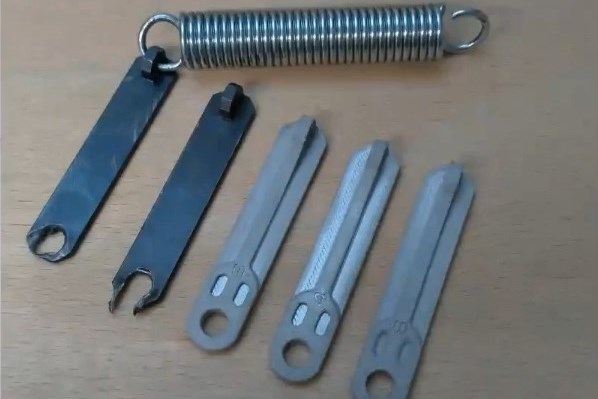
Additive manufacturing opens up design possibilities that are prohibitively expensive with traditional manufacturing methods. Preziosa Francesco S.r.l. noted that a spring holder hanger it used suffered frequent tearout issues, and so began printing its own, modifying the design to increase the component’s strength.
Stronger Spring Holder Hanger
Preziosa Francesco S.r.l. used the Studio System to make notable innovations upon a spring holder hanger. This piece was part of a paneling machine, coupling with a gear through a spring to enable the machine’s arm to rotate pieces of sheet metal. With traditional methods, the shop took seven days to receive the part — longer, if its supplier was out of stock. It also cost €60 per part, and the design suffered from frequent tearout issues. Preziosa Francesco S.r.l. reverse-engineered the part and optimized its geometry within Desktop Metal’s software architecture. When produced through AM on the Studio System, this modified part had a 1-hour-and-40-minute production time, cost only €15 per part, had less material waste and demonstrated increased strength.
Dramatic Cost Reduction for Multiple Parts
Eaton Corporation’s Vehicle Group used the Studio System to produce replacement furnace chain guides — furnace loading and unloading conveyor components that the firm’s external vendors machined and heat treated. After using a 3D scanner to build the model and printing it with the Studio System, Eaton realized 82% cost savings and an extended part life. The system also enabled the firm to realize significant benefits for testing fixtures and gripping components, particularly in the case of a test stand oil fill nozzle. Because AM is able to create complex internal geometries and features at a reduction in cost — as opposed to the increase in expense with standard machining — this part saw even more significant cost savings compared to purchasing from an external vendor using traditional manufacturing: the statistics Rejto provided report cost savings between 94% and 96%.
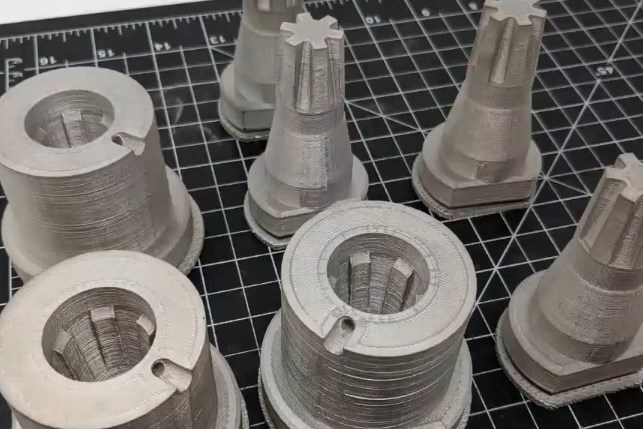
Before adopting the Studio System, Innovative Plastics Inc. had lead times for molds between to four and six weeks. With the AM system, however, time to part became 5.75 days. Even with the need for some postprocessing, this represented massive efficiency and cost savings for the manufacturer, especially in cases when it needs to make alterations to a mold design.
Near-Net Molds in Under a Week
Innovative Plastics Inc. used the Studio System to change the production method for its molds. Traditionally, the company has used CNC mills and EDM — but even the simplest mold made this way requires lead time between four and six weeks. Performing AM through the Studio System enabled the company to print near-net-shape mold tooling in a fraction of the time, while also adding conformal cooling channels. Without postprocessing (which these 3D printed molds still require), time to part is about 5.75 days. The mold for one part, an exhaust cover cap for a boat motor, traditionally cost between $10,000 and $12,000, with a molding cycle time between 23 and 25 seconds. The AM part reduced costs to between $6,000 and $8,000, with a shortened cycle time of 20 seconds due to conformal cooling. This enabled Innovative Plastics to not only cut costs, but also increase production and revenue.
Related Content
This Drone Bird with 3D Printed Parts Mimics a Peregrine Falcon: The Cool Parts Show #66
The Drone Bird Company has developed aircraft that mimic birds of prey to scare off problem birds. The drones feature 3D printed fuselages made by Parts on Demand from ALM materials.
Read MoreTitanium Golf Club Line Leverages AM to Boost Clubhead Performance
Japanese lifestyle golf brand Designer utilizes Farsoon 3D printing to optimize the design and production of its latest titanium golf club line.
Read More3D Printed Cutting Tool for Large Transmission Part: The Cool Parts Show Bonus
A boring tool that was once 30 kg challenged the performance of the machining center using it. The replacement tool is 11.5 kg, and more efficient as well, thanks to generative design.
Read MoreReusable LOX/Kerosene Engine Completes First Successful Full-System Test Flight
Galactic Energy Space Technology announced the first successful full-system test flight of its Welkin 50-ton reusable LOX/kerosene engine. To date, this is the highest thrust LOX/kerosene engine in the Chinese commercial aerospace playing field which has officially entered the engineering and manufacturing phase.
Read MoreRead Next
Metal 3D Printing Makes Combustion More Efficient
John Zink Hamworthy Combustion is finding success with Bound Metal Deposition (BMD) for prototypes and replacement parts, but the real promise it sees is in new designs that couldn’t be made any other way.
Read MoreThe Promise of Lower-Cost Metal 3D Printing: 3 Views
Representatives of companies using the new Desktop Metal system—Caterpillar, Jabil and Lowes—describe their expected applications for this capability.
Read MoreSix Additional Advantages of the Desktop Metal Systems
Beyond the accessibility and simplicity, the new metal 3D printing technology delivers other significant benefits as well. One example: Remove support structures by hand rather than machining them.
Read More

